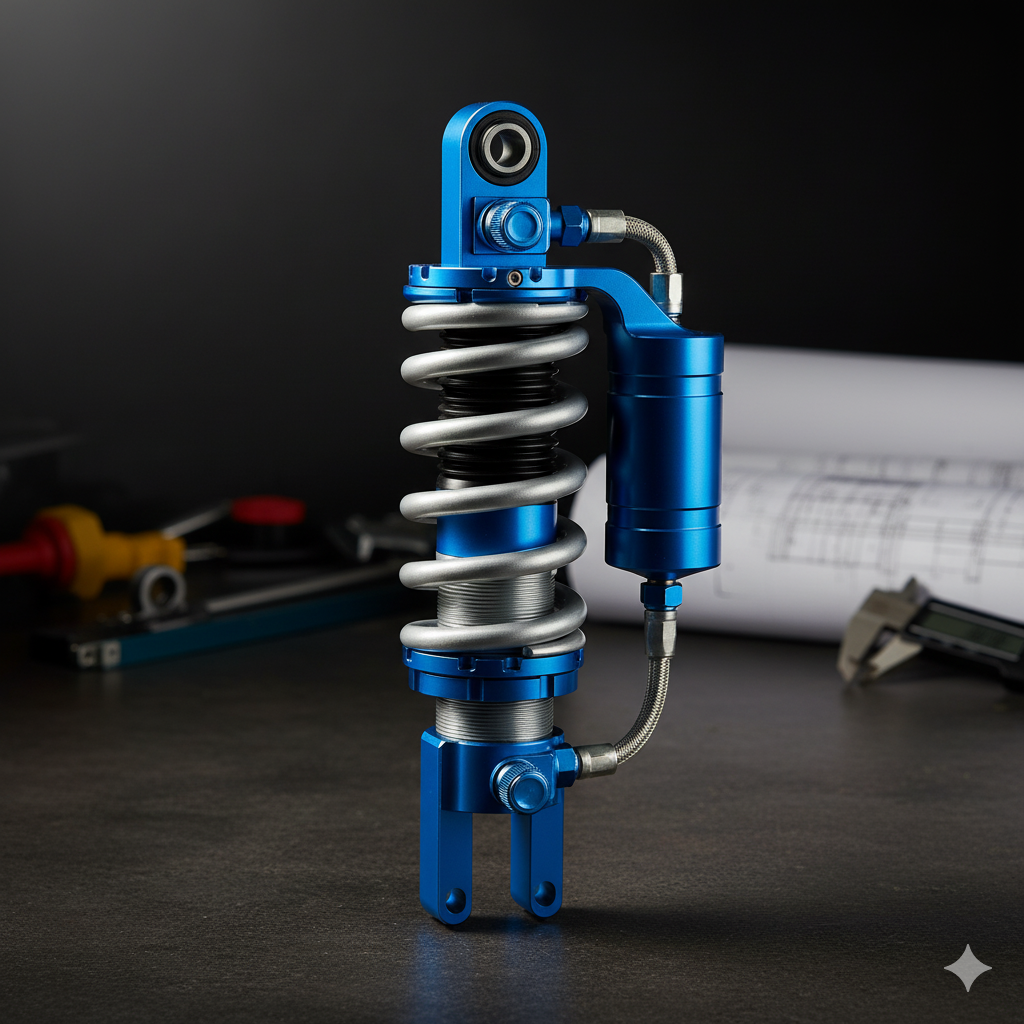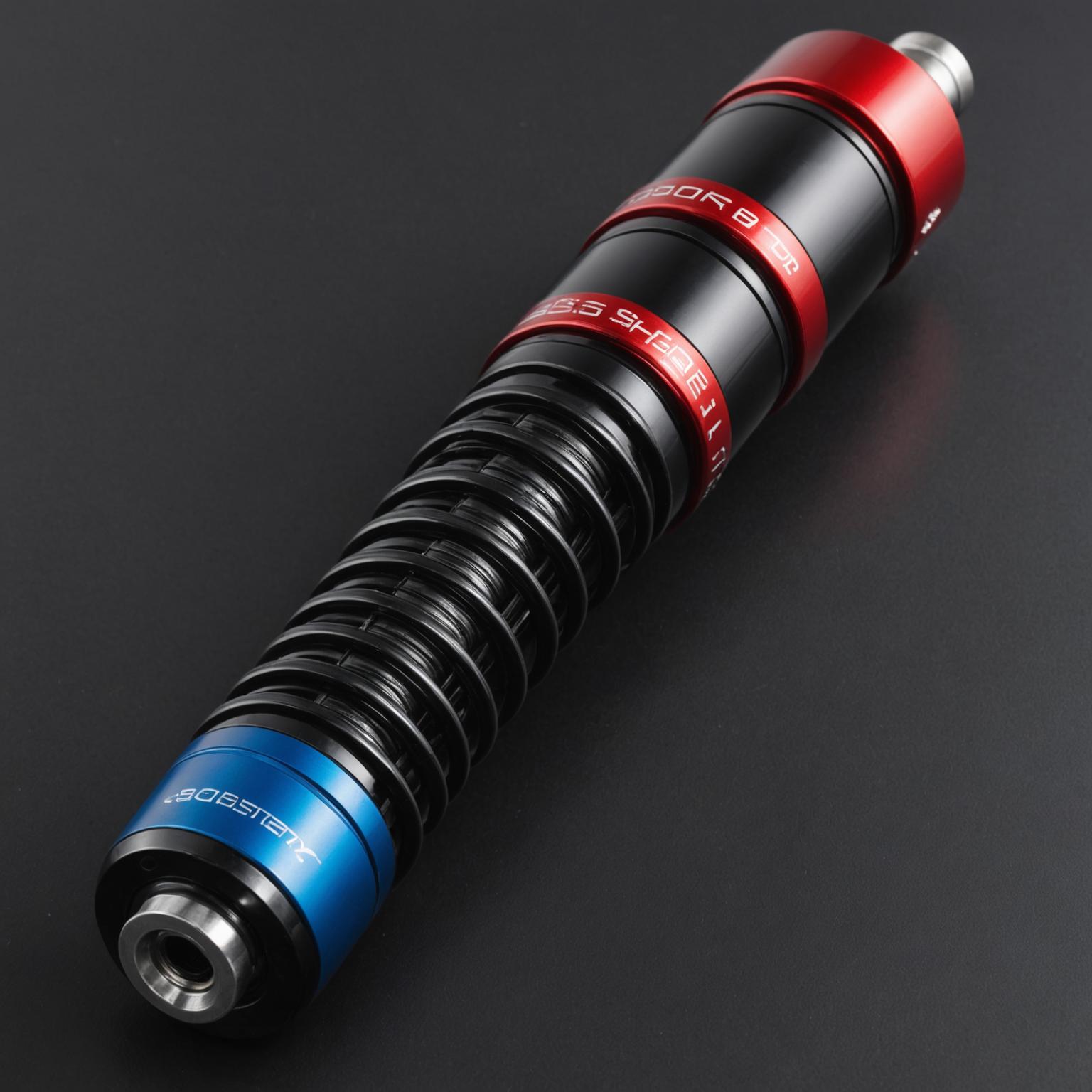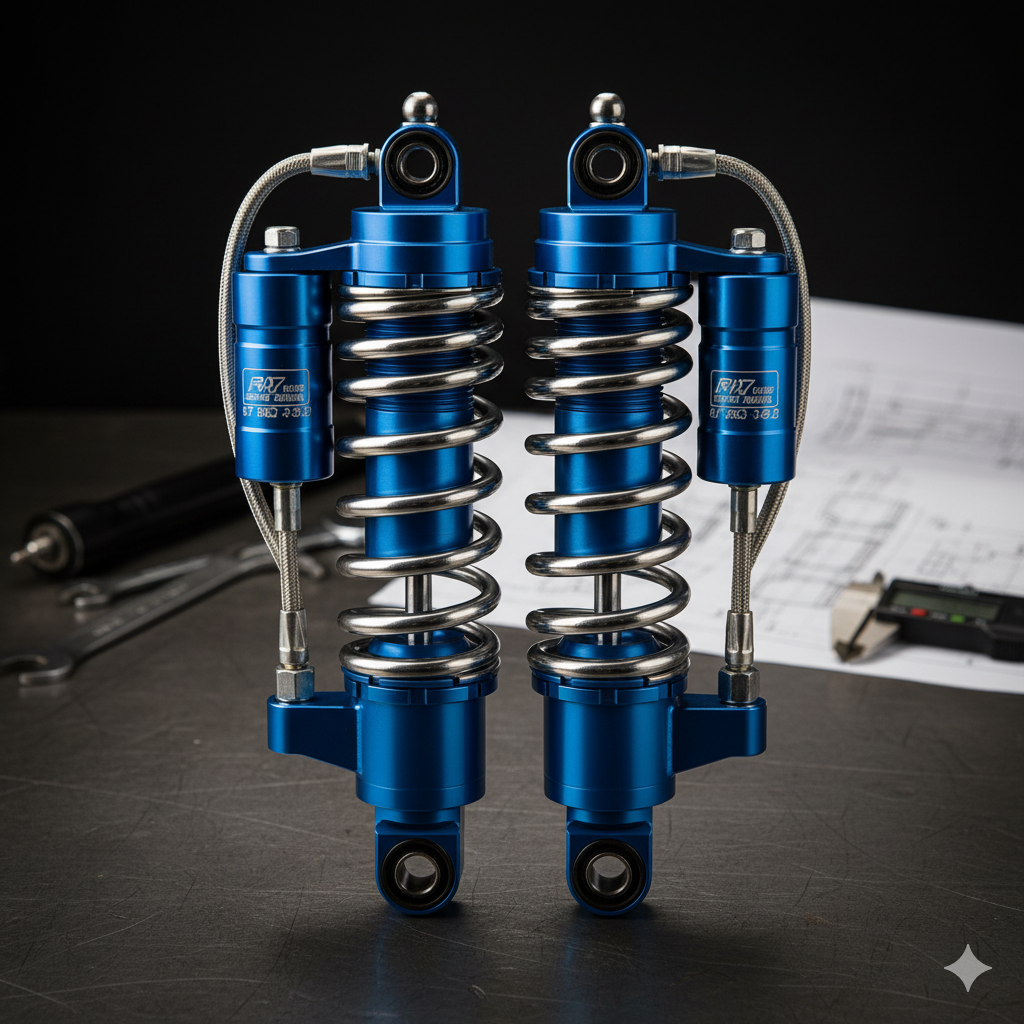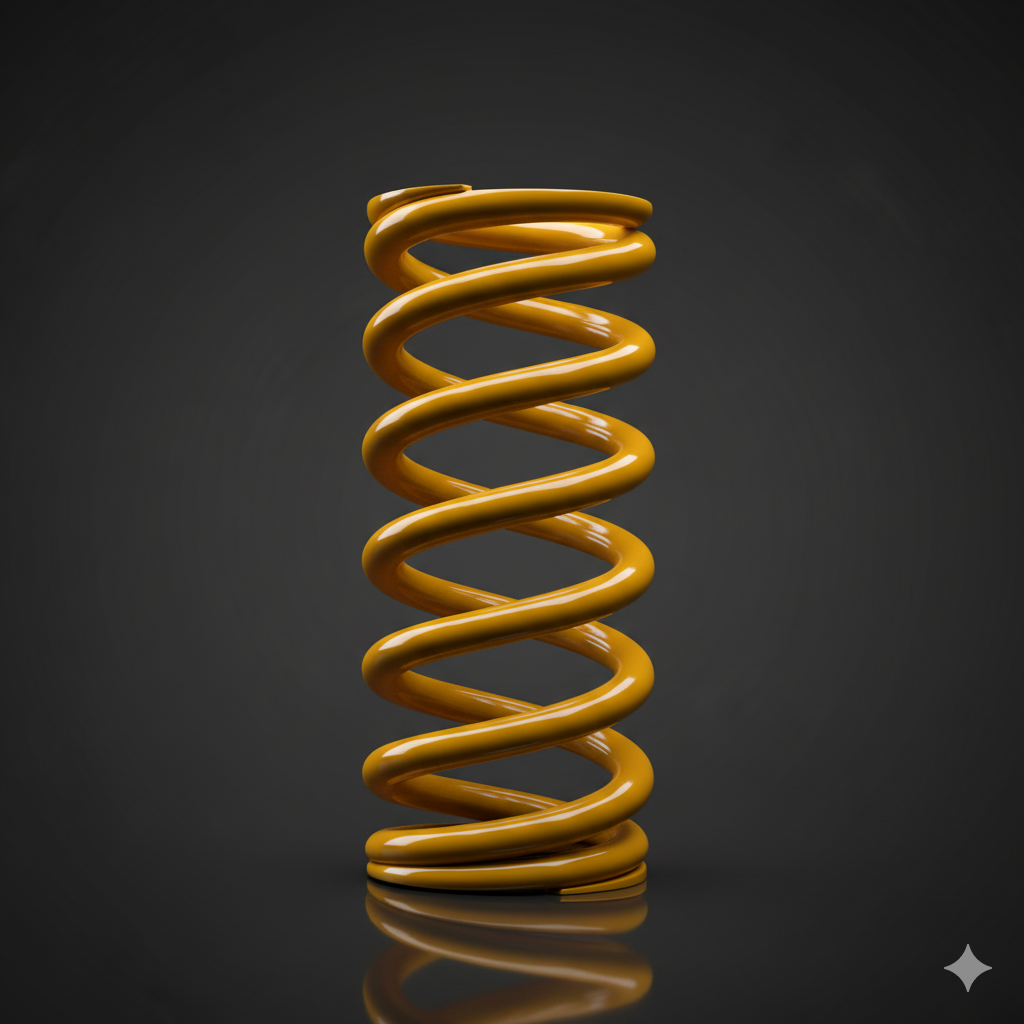
Hydraulic Damper Manufacturer: Precision Engineering for Motion Control and Ride Stability
Industry Challenge: Controlling Motion with Precision and Reliability
Modern vehicles and equipment depend on hydraulic dampers to convert motion into resistance—transforming uncontrolled vibration into smooth, stable movement.
As power output and operational loads increase, damper manufacturers face growing pressure to maintain performance consistency under heat, friction, and fatigue.
A high-quality hydraulic damper must achieve three goals simultaneously:
-
Stable damping force across temperature variations,
-
Low noise and friction for rider comfort, and
-
Extended service life under continuous dynamic load.
Bedo’s engineering process combines fluid dynamics, precision machining, and material science to ensure these requirements are consistently met in every damper unit.
Core Engineering: How Hydraulic Dampers Work
A hydraulic damper functions by converting kinetic energy into heat via viscous fluid flow. Inside each cylinder, a piston and valve system regulate the oil’s movement, controlling both compression and rebound.
Main Structural Components
-
Cylinder Tube – Hardened alloy steel or anodized aluminum for pressure resistance.
-
Piston Assembly – Multi-valve configuration controlling bidirectional flow rates.
-
Hydraulic Oil – Low-viscosity fluid designed for stable damping under heat.
-
Seal Rings – High-temperature-resistant elastomers preventing leakage.
-
Gas Chamber (optional) – Nitrogen charge minimizes cavitation during rapid cycling.
By precisely tuning the orifice size, valve preload, and oil viscosity, manufacturers can calibrate the damping curve to suit different vehicles—from lightweight scooters to heavy-duty equipment.
From Generic to Precision Hydraulic Systems
| Parameter | Conventional Damper | Precision Hydraulic Damper (Bedo) |
|---|---|---|
| Damping Control | Fixed-valve flow | Tunable multi-valve flow dynamics |
| Material | Standard carbon steel | Heat-treated alloy with anti-friction coating |
| Cavitation Resistance | Low | Gas-charged chamber for pressure balance |
| Temperature Performance | Fluctuates under load | Stable damping up to 150°C |
| Manufacturing Tolerance | ±0.5 mm | CNC tolerance ±0.05 mm |
| Fatigue Life | 100,000 cycles | 500,000+ validated test cycles |
Through computational fluid dynamics (CFD) modeling and precision CNC machining, Bedo ensures that each hydraulic damper delivers a repeatable damping curve—crucial for OEM partners demanding consistent batch performance.
Material Science: The Hidden Force Behind Durability
Performance depends not only on design but also on metallurgy.
Bedo employs chrome-plated piston rods with surface roughness <0.2μm to reduce oil film friction and wear.
Cylinders are treated through phosphate or hard anodizing processes, protecting against corrosion and internal abrasion.
Additional Reinforcements Include:
-
Teflon-coated valve discs to prevent sticking under micro-oscillation.
-
Heat-resistant seals that maintain elasticity beyond 120°C.
-
Oil filtration and degassing ensuring long-term viscosity stability.
The result is a hydraulic damper capable of performing under extreme vibration, heat, and environmental stress without loss of damping precision.
Performance Optimization: What Defines a High-Grade Hydraulic Damper
1. Damping Linearity
Smooth resistance proportional to speed, ensuring predictable motion.
2. Thermal Stability
Consistent damping despite oil temperature rise during prolonged operation.
3. Multi-Directional Responsiveness
Precise control during both compression (impact absorption) and rebound (recovery).
4. Noise and Vibration Reduction
Hydraulic damping minimizes structural resonance and reduces NVH (Noise, Vibration, Harshness).
5. Extended Lifecycle
Reinforced materials and lubrication channels prevent premature wear and leakage.
Bedo integrates all five aspects into its production design, validated through in-house endurance and high-frequency fatigue testing.
Application Diversity: From Motorcycles to Industrial Machinery
Hydraulic dampers are critical across a broad range of applications, each demanding different performance curves:
| Application | Function | Design Focus |
|---|---|---|
| Motorcycles | Suspension damping | Comfort + road stability |
| ATVs / Off-Road | Impact absorption | Long-travel, dual-valve tuning |
| Industrial Equipment | Motion control | Load balance + vibration isolation |
| Automotive Seating | Vibration absorption | Compact, low-noise architecture |
| Electric Vehicles | Energy-efficient damping | Lightweight aluminum housing |
Bedo’s modular manufacturing system enables tailored damping characteristics for any configuration, maintaining OEM-level repeatability.
Procurement Insights: Choosing the Right Hydraulic Damper Partner
For OEMs, sourcing hydraulic dampers is a long-term strategic choice tied directly to product reliability and end-user safety.
Key Evaluation Factors:
-
Testing Certification: Verify ISO/TS16949 and fatigue validation reports.
-
Material Traceability: Confirm batch-level documentation for steel and seals.
-
Performance Data: Request damping force graphs under multiple velocity inputs.
-
Corrosion Protection: Ensure ≥720-hour salt spray resistance for export models.
-
After-Sales Technical Support: Assess responsiveness for revalidation or tuning needs.
Bedo’s export-ready dampers are delivered with full COC, PPAP, and endurance reports, ensuring transparency throughout the supply chain.
Industry Q&A: Addressing Common Buyer Queries
Q1: How does Bedo maintain damping consistency across temperature changes?
Our systems use thermally stabilized hydraulic oil and adaptive valve preload designs tested up to 150°C for consistent force output.
Q2: Can Bedo customize damping curves for different vehicle types?
Yes. We simulate and calibrate damping force according to target velocity and load profiles, offering OEM-specific tuning.
Q3: What endurance testing standards do Bedo dampers meet?
Each model passes fatigue validation exceeding 500,000 compression-rebound cycles under continuous operation.
Q4: Are Bedo hydraulic dampers suitable for electric vehicles or lightweight applications?
Absolutely. Our aluminum monotube dampers combine weight reduction with high-pressure damping precision ideal for EV platforms.
Hydraulic Control Redefined by Precision Manufacturing
Hydraulic damping is more than mechanical resistance—it’s the science of controlled motion.
By merging advanced fluid mechanics, alloy engineering, and CNC precision, Bedo delivers hydraulic dampers that balance responsiveness, durability, and silence.
From motorcycles to industrial systems, Bedo’s solutions represent the future of OEM-grade motion control—refined for global standards and built for lasting reliability.
Discover more about Bedo’s damping technologies on our homepage or reach our technical team via the contact page for customized development support.




